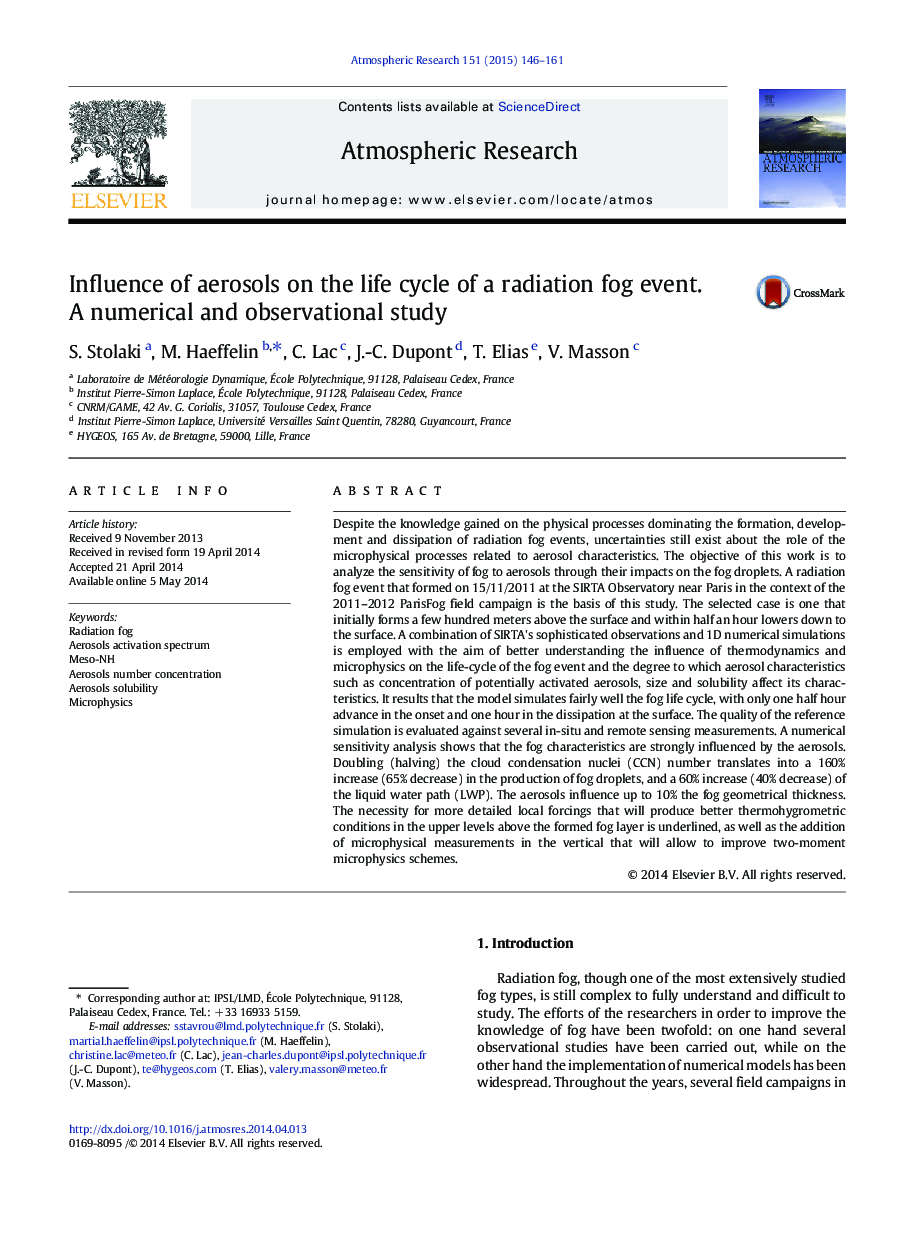| کد مقاله | کد نشریه | سال انتشار | مقاله انگلیسی | نسخه تمام متن |
|---|---|---|---|---|
| 4449780 | 1620522 | 2015 | 16 صفحه PDF | دانلود رایگان |
• A radiation fog event with a combination of ParisFog observational and numerical data is studied.
• Meso-NH simulates fairly well the fog life cycle, with half hour (one hour) advance in the onset (dissipation).
• Stronger influence of CCN number concentration on the fog microphysical characteristics than chemistry.
• More detailed local forcings will produce better thermohygrometric conditions.
• Addition of microphysical measurements in the vertical will allow improvement of two-moment microphysics schemes.
Despite the knowledge gained on the physical processes dominating the formation, development and dissipation of radiation fog events, uncertainties still exist about the role of the microphysical processes related to aerosol characteristics. The objective of this work is to analyze the sensitivity of fog to aerosols through their impacts on the fog droplets. A radiation fog event that formed on 15/11/2011 at the SIRTA Observatory near Paris in the context of the 2011–2012 ParisFog field campaign is the basis of this study. The selected case is one that initially forms a few hundred meters above the surface and within half an hour lowers down to the surface. A combination of SIRTA's sophisticated observations and 1D numerical simulations is employed with the aim of better understanding the influence of thermodynamics and microphysics on the life-cycle of the fog event and the degree to which aerosol characteristics such as concentration of potentially activated aerosols, size and solubility affect its characteristics. It results that the model simulates fairly well the fog life cycle, with only one half hour advance in the onset and one hour in the dissipation at the surface. The quality of the reference simulation is evaluated against several in-situ and remote sensing measurements. A numerical sensitivity analysis shows that the fog characteristics are strongly influenced by the aerosols. Doubling (halving) the cloud condensation nuclei (CCN) number translates into a 160% increase (65% decrease) in the production of fog droplets, and a 60% increase (40% decrease) of the liquid water path (LWP). The aerosols influence up to 10% the fog geometrical thickness. The necessity for more detailed local forcings that will produce better thermohygrometric conditions in the upper levels above the formed fog layer is underlined, as well as the addition of microphysical measurements in the vertical that will allow to improve two-moment microphysics schemes.
Journal: Atmospheric Research - Volume 151, 1 January 2015, Pages 146–161
